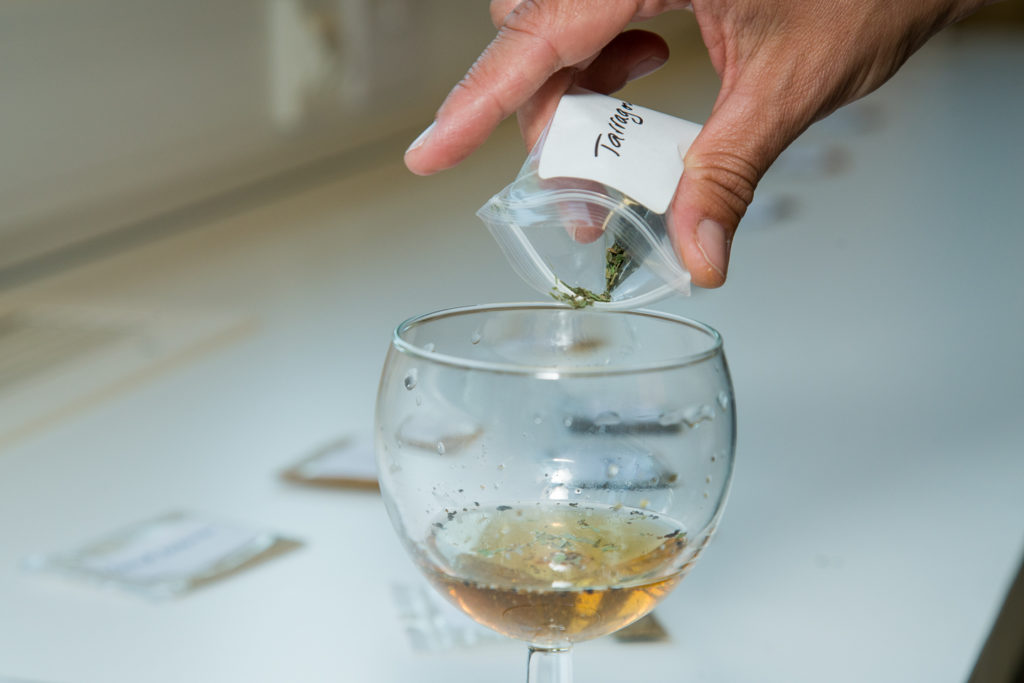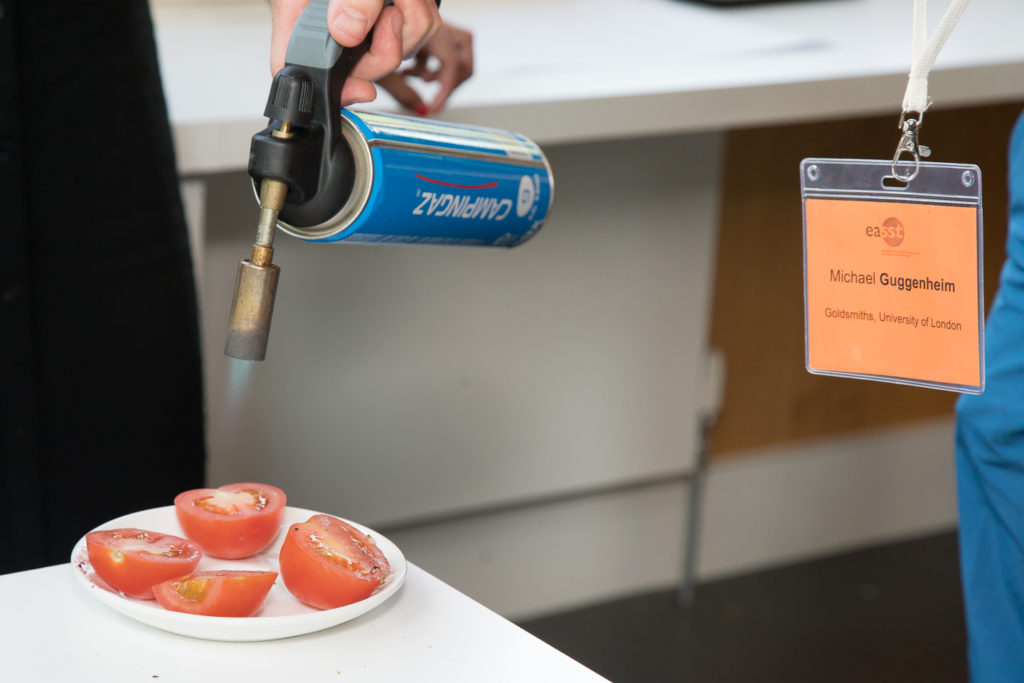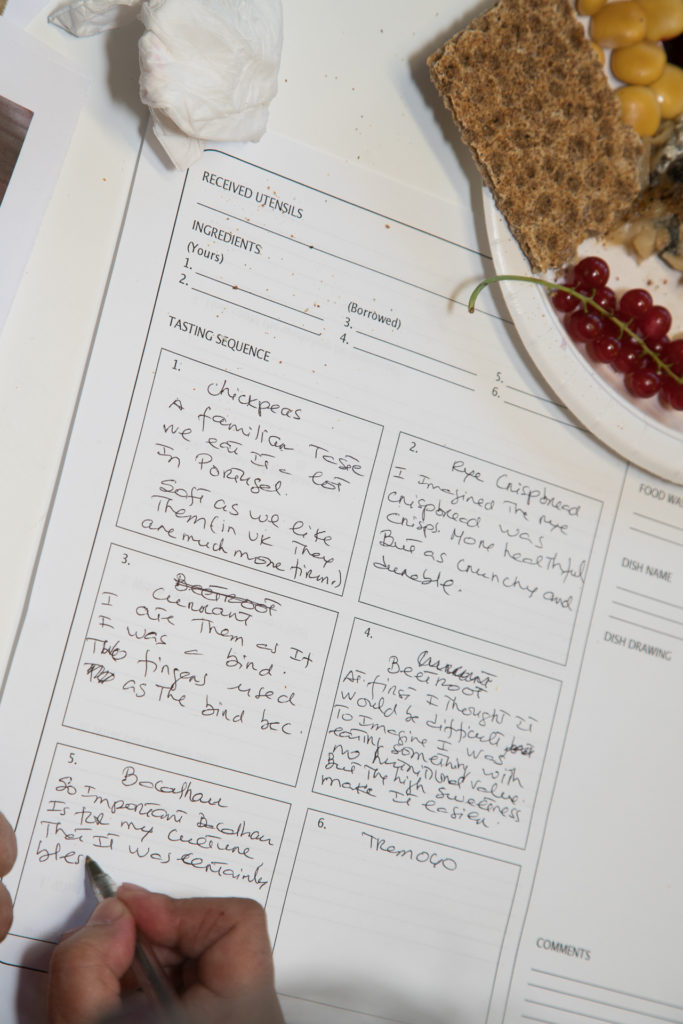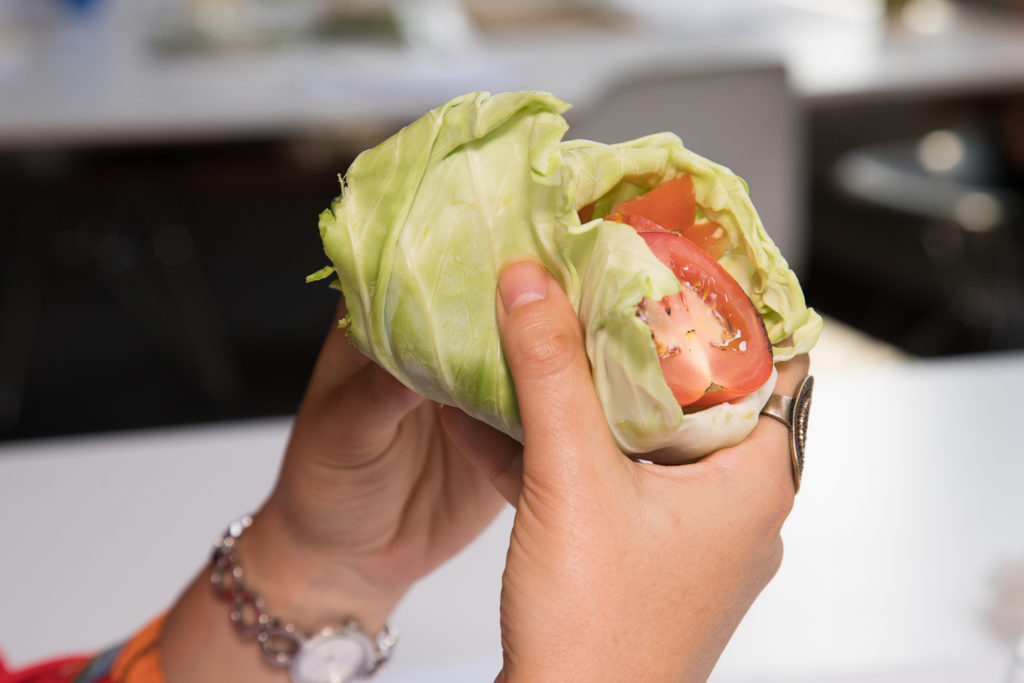How can we do STS not about but with food? How can we make the concerns of STS edible? In the workshop Encounter, create and eat the world: a meal at EASST Lancaster we did STS by collectively preparing a lunch. This involved conducting a series of exercises, experiments and tests with ingredients, their relationship to us and the world, and how to prepare them. In preparation for the workshop, we asked all pre-registered participants to:
- Bring two ingredients amounting to 500 g in total (at least one of the ingredients had to be vegan). Such ingredients might be anything that can be eaten without being further cooked.
- Prepare four identical cards for each ingredient with a story about the ingredient inspired by STS.
- Bring their own choice of dinnerware and utensils to eat the food with. This could be anything they liked from the most usual (plate and fork) to the most unusual (some found plastic from the street), as long as ready and clean. They also needed to prepare a two-minute story that they could tell about the sociological, technological and environmental background of these tools.
- Bring one mechanical kitchen tool of their choice (grater, sieve, hammer, peeler, garlic press, whisk…).
Once in the workshop, people sat on tables in groups of five people. The first activity was to pass your eating utensils to the person on your right and tell them the prepared story. Then, each person had to chose a portion of an ingredient from each of the other four people in the table. As a result, each person had six ingredients in total. All the packaging and food waste was put to the side before starting the tasting exercises sequence, as follows:
- Blind tasting: Close your eyes. Then ask your neighbour to feed you a random ingredient. Write down your thoughts.
- Bengt af Klintberg, “Event score Nr. 8” (Klintberg is a Swedish Anthropologist and Fluxus artist. The event scores are written instructions for actions): Eat an X (orange) as if it were a Y (apple).
Event score versions:
- Eat an ingredient ‘as a mouse or any other animal (it should be an animal that actually eats this food)’.
- Eat an ingredient as if it were completely artificial and had no nutritional value.
- Eat an ingredient as if it had been blessed by the divine.
- Eat an ingredient as if you suspect it may be contaminated by an infectious parasite.
People were asked to read each corresponding ingredient card after the first three tastings and before the last three and an A3 sheet was provided to write down observations throughout the workshop.
After the tasting sequence, participants had to build a dish taking into account at least two of the following concepts: Gender, Ecology, Politics, Health, Human non-humans, Technology, Religion.
For this purpose, participants were able to choose two herbs or spices to include in the dish. These came from ‘Spiritual Flavours Spice Lab’, which is part of Laura Cuch’s research on food and spirituality (www.spiritualflavours.com). Participants also had to incorporate one element from the waste pile, either as a new utensil or a new ingredient.
Finally, people were invited to:
- Explain how the eating utensils informed /shaped / contrasted with their dish
- Define a consumption situation that problematised or contradicted the dish logic.
- Make a drawing of the dish
- Share their dish with the person to their right, whilst telling the story behind it.
Bon appétit!
* All photographs by ©Laura Cuch, 2018

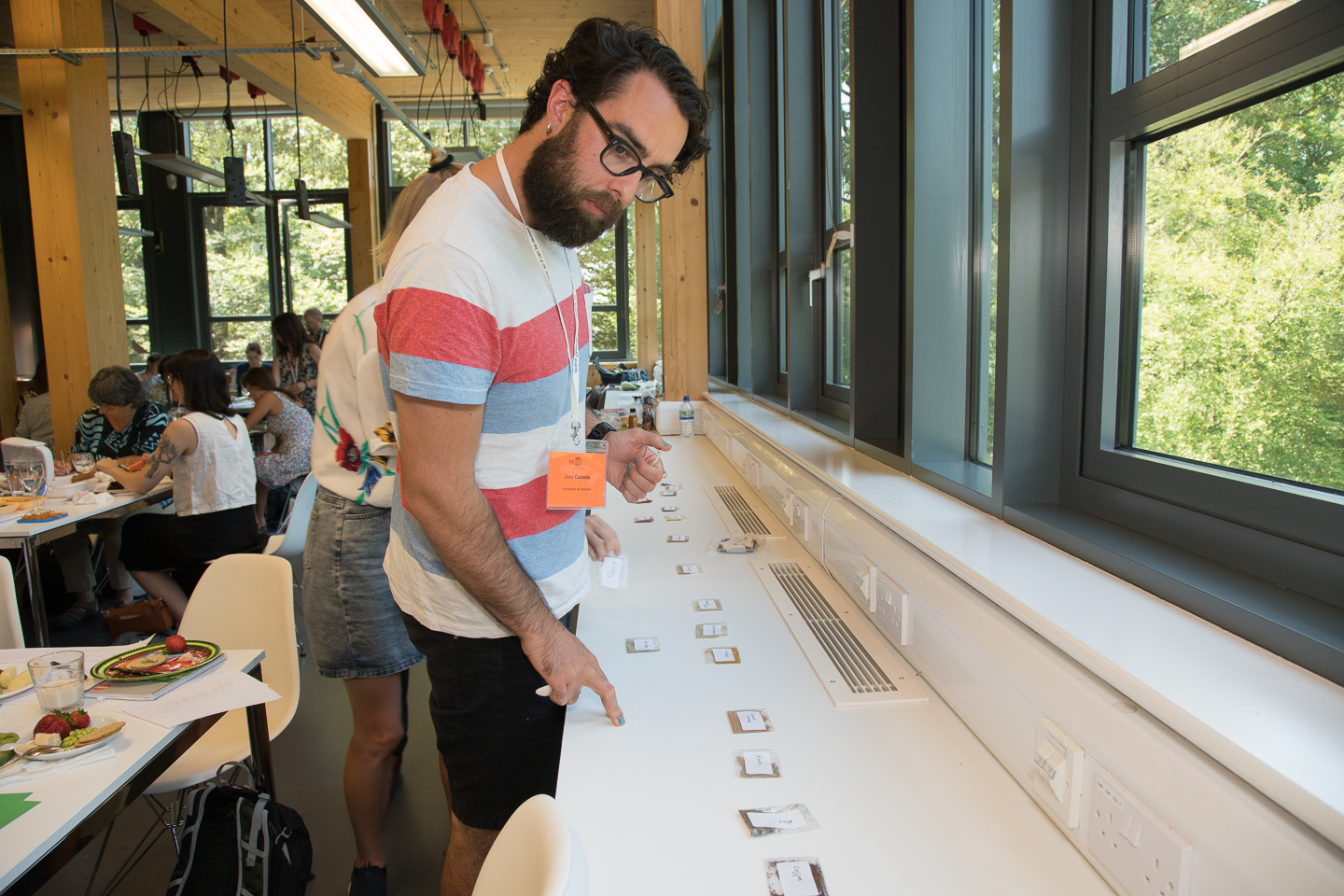

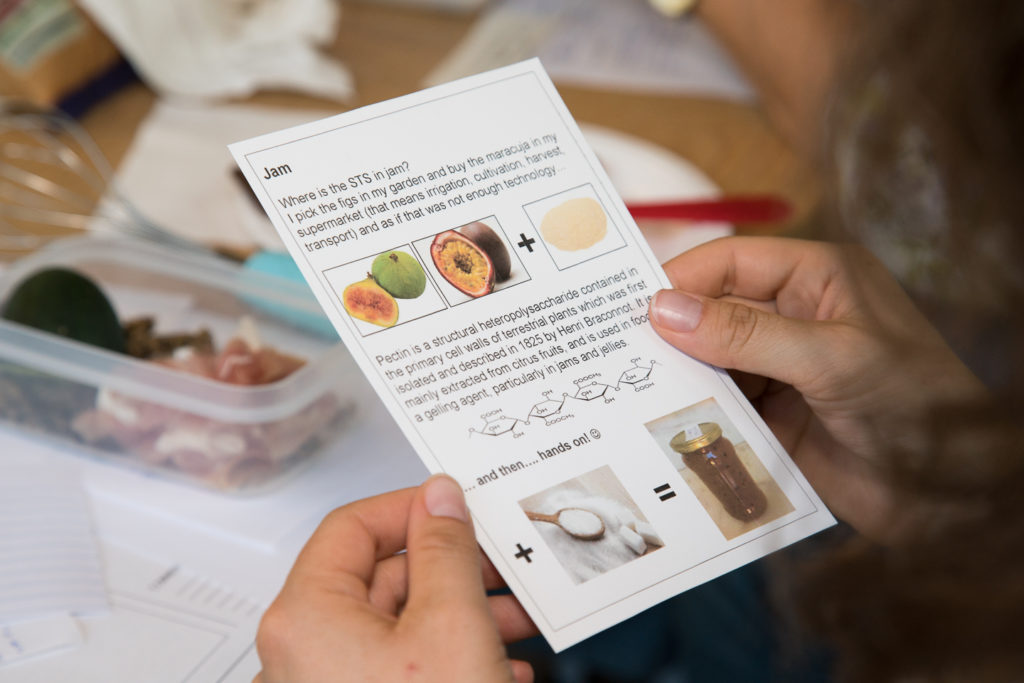
People choosing herbs and spices.
Blind tasting exercise.
Participant reading a card of a chosen ingredient brought to the workshop by another participant.



